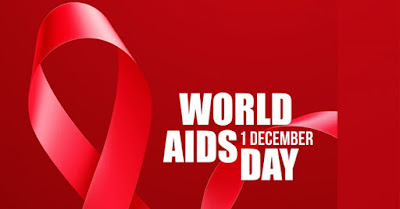World AIDS Day is observed on
December 1 every year to create awareness about the symptoms, causes and
preventives of the pandemic diseases HIV/AIDS that has taken unprecedented
number of lives. Like every year, World AIDS Day 2017 was celebrated with a new
theme “Right to Health” including a range of interactive activities, campaigns
by distributing posters and events that are endorsed by governments, people and
organizations.
According to UNAIDS report, by June
2017, around 20.9 million people had access to the life-saving medicines. This
is a far cry from 2000, when only 685,000 people living with HIV had access to
antiretroviral therapy. In 2016, around 1.8 million people were newly infected
with HIV, a 39% decrease from the 3 million who became newly infected at the
peak of the epidemic in the late 1990s.
Since its inception in 1988, World
AIDS Day is celebrated after the consultation of foremost global health
organizations. To mark the event across the globe, HIV/AIDS activists wear a
red ribbon which is a symbol of solidarity and support towards the people
living with HIV.
One of the objectives of World AIDS
Day is to create awareness on what is AIDS. AIDS (Acquired Immune Deficiency
Syndrome) is a medical condition caused by HIV (Human Immunodeficiency Virus)
that sabotages the immune system of a person making it vulnerable to infections
including opportunistic infections. HIV can be transmitted in many ways such as
sexual transmission without a condom, use of contaminated syringe or drug
equipment, blood transfusion from an infected person and from mother to child
during giving birth or breast feeding.
Awareness camps are held on World
AIDS Day to enlighten people about the signs and symptoms of HIV/AIDS. An
infected person would look normal in appearance but certain symptoms can be
noticed. Study has identified certain signs and symptoms of AIDS that include:
unusual mark on the tongue, fever, dry cough, pneumonia, fatigue, nausea, and
headache. This disease can be diagnosed when the number of immune system cells
(CD4 cells) in the blood of an HIV positive person declines below a normal
level.
Celebration of World AIDS Day is
symbolically a call to enhance social protection mechanism for people with HIV
and alert governments in framing unbiased policies for vulnerable population so
that they enjoy equal status in the society. UNAIDS and numerous social welfare
organization are constantly striving and taking initiatives on AIDS awareness
and to reach both urban and rural areas.
On the eve of World AIDS Day,
internationally acclaimed sand artist Sudarsan Pattnaik created the world’s
longest red ribbon on the Odisha’s famed Puri beach to generate awareness about
the fatal disease. Pattnaik attempt to recreate the ribbon on sand is 800 feet
long and 400 feet wide, an immense sand art which could only be captured with a
drone camera. The Limca book of records took cognizance of Pattnaik feat and
his name has been registered in the world record for the longest sand art
ribbon.

No comments:
Post a Comment